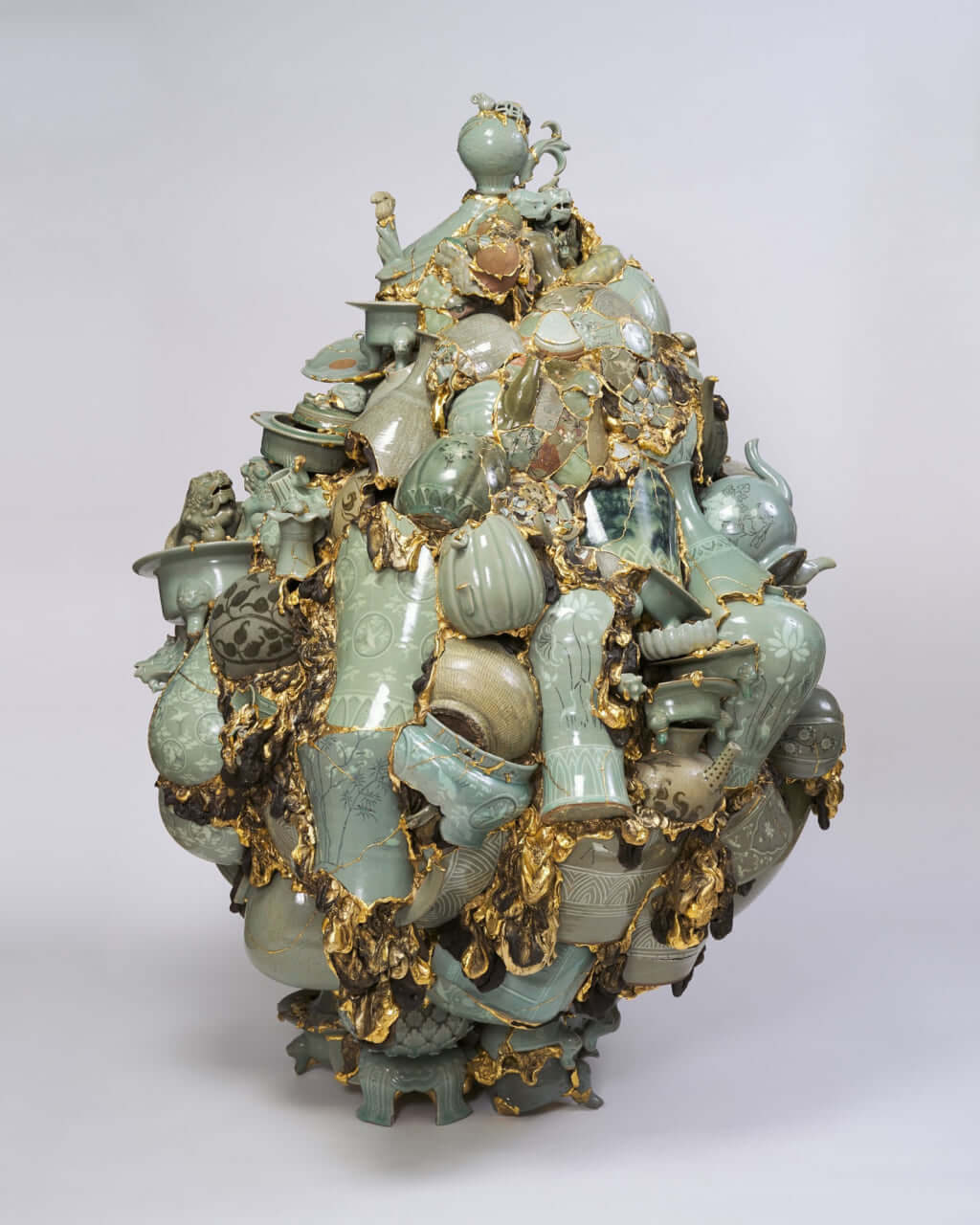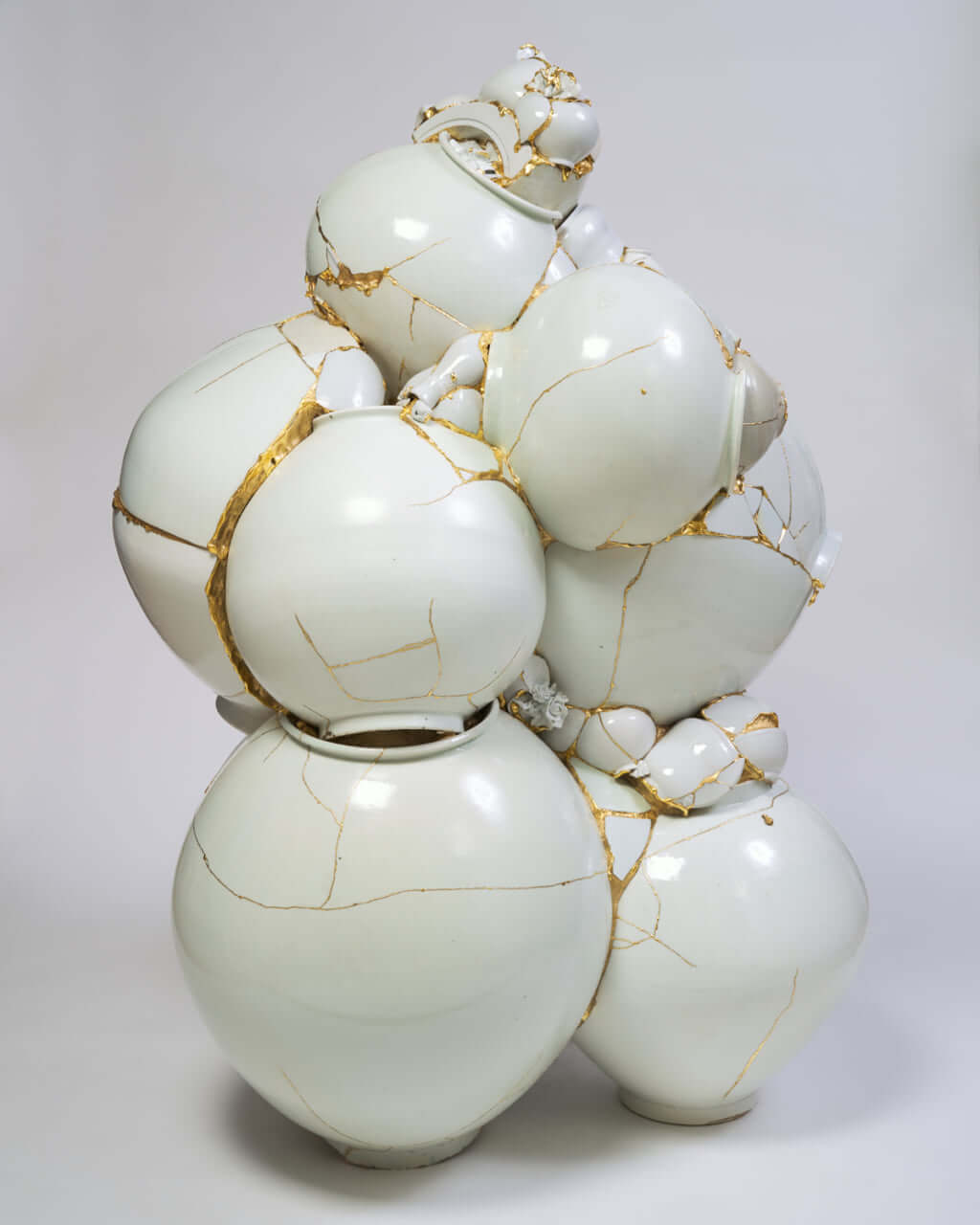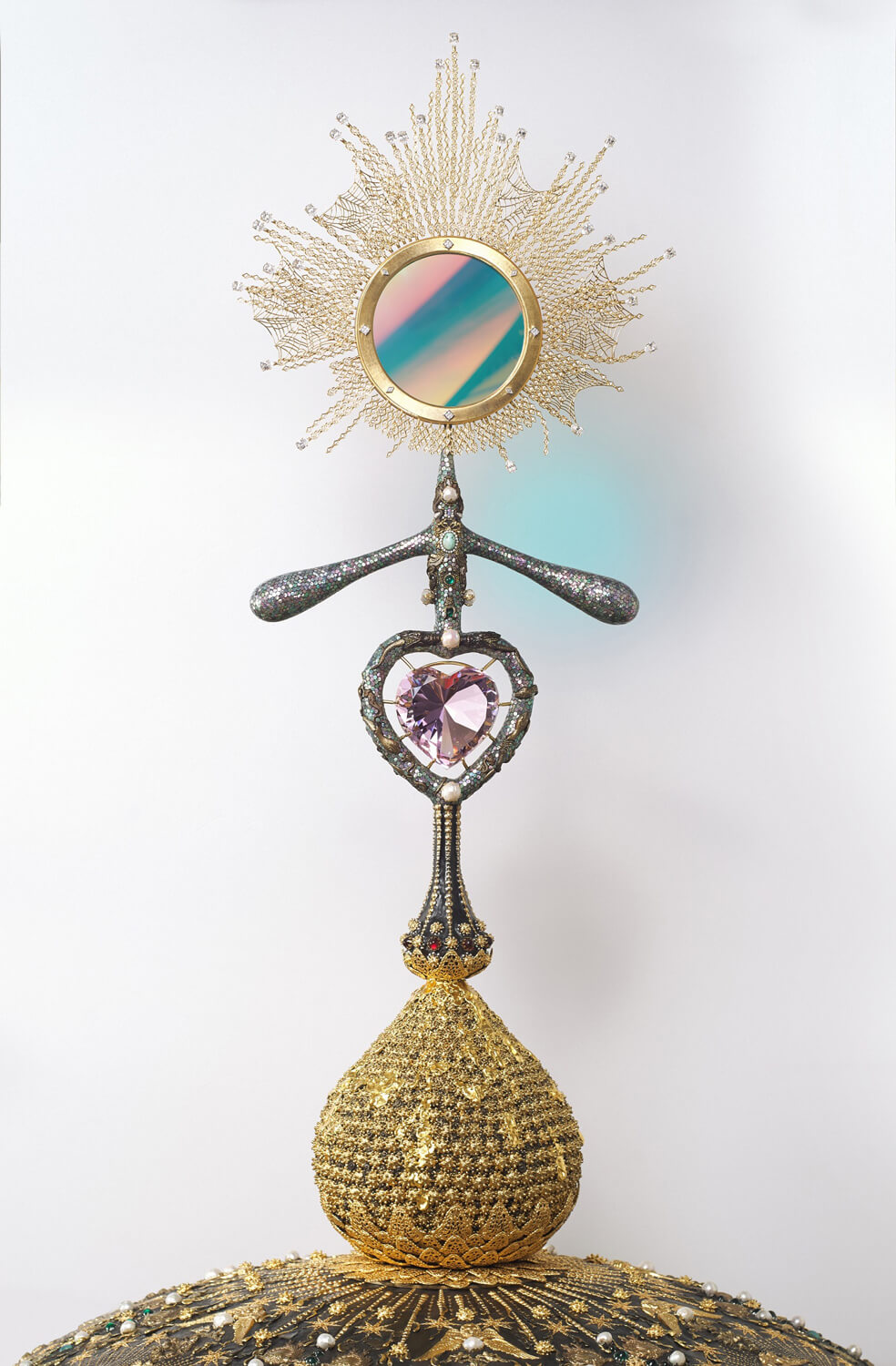Artist Yeesookyung’s Gold Sculptures

Translated Vase_2018 TVG 3 (2019) / ceramic shards, epoxy, 24k gold leaf / Courtesy of the artist / Photo ©Yang Ian
In her series Translated Vase, Korean artist Yeesookyung gathers fragments of traditional Korean ceramics and porcelain and uses them to assemble hybrid sculptures much like a puzzle. To hold all the pieces together, she appears to take inspiration from the ancestral Japanese technique kintsugi, which involves giving a second life to objects by repairing any cracks using varnish covered in gold powder.
From the words ‘kin’, gold, and ‘sugi’, joinery, kintsugi showcases the flaws in items by transforming them into golden scars as opposed to hiding the damaged object in a cupboard or, worse still, throwing it away. The art dates back to the end of the 15th century. Legend has it that shogun Ashikaga Yoshimasa broke his favourite bowl during a tea ceremony. He sent it to China, where it originally came from, to have it repaired. However, when the bowl was returned to him, he discovered that it had been patched up in a shoddy manner, using ugly metal staples. He therefore decided to call upon Japanese artisans to do the job, and they developed a new, more aesthetically pleasing technique for the occasion, which was kintsugi. After many hours of meticulous work which required a great deal of finesse and patience, the history and accidents experienced by the object were revealed in all their beauty, through its golden cracks.
Beyond the dazzling visual result in 24 carat gold, each repaired object adheres to a positive philosophy which dictates that the cracks and scars of the past are not something to be concealed, but rather to be acknowledged and made beautiful. It is with this in mind that artist Yeesookyung assembles fragments of Korean objects to showcase the beauty of fragility and the imperfections of human existence. All of this is done in order to reconstruct the pieces of Korean history which, much like kintsugi, is fragile and delicate like ceramics, and strong and durable like gold.

Translated Vase_2019 TVCW 2 (2019) / porcelain & ceramic shards, epoxy, 24k gold leaf / Courtesy of the artist

Moonlight Crown_Shhh... (2019) / steel, epoxy, wood / Courtesy of the artist / Photo ©Yang Ian

Moonlight Crown_On the Cliff (2018) / brass, glass, epoxy, wood, pearl, 24k gold leaf, mother-of-pearl / Courtesy of the artist / Photo ©Yang Ian

Moonlight Crown_Bari's Tears (2019) / steel, brass, glass, epoxy, wood, resin, crystal, 24k gold leaf, mother-of-pearl / Courtesy of the artist / Photo ©Yang Ian

Courtesy of Ministero per i Beni e le Attività Culturali e del Turismo - Museo e Real Bosco di Capodimonte / Photo: Amedeo Benestante
TRENDING
-
A House from the Taisho Era Reveals Its Secrets
While visiting an abandoned building, Hamish Campbell discovered photographs the owner had taken of the place in the 1920s.

-
The Taboo-Breaking Erotica of Toshio Saeki
The master of the 1970s Japanese avant-garde reimagined his most iconic artworks for a limited box set with silkscreen artist Fumie Taniyama.

-
With Meisa Fujishiro, Tokyo's Nudes Stand Tall
In the series 'Sketches of Tokyo', the photographer revisits the genre by bringing it face to face with the capital's architecture.

-
Masahisa Fukase's Family Portraits
In his series ‘Family’, the photographer compiles surprising photos in which he questions death, the inescapable.

-
Hajime Sorayama's Futuristic Eroticism
The illustrator is the pioneer for a form of hyperrealism that combines sensuality and technology and depicts sexualised robots.





